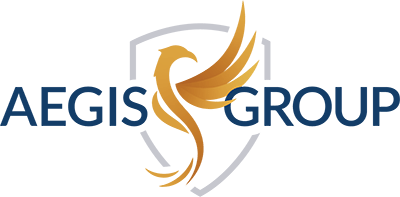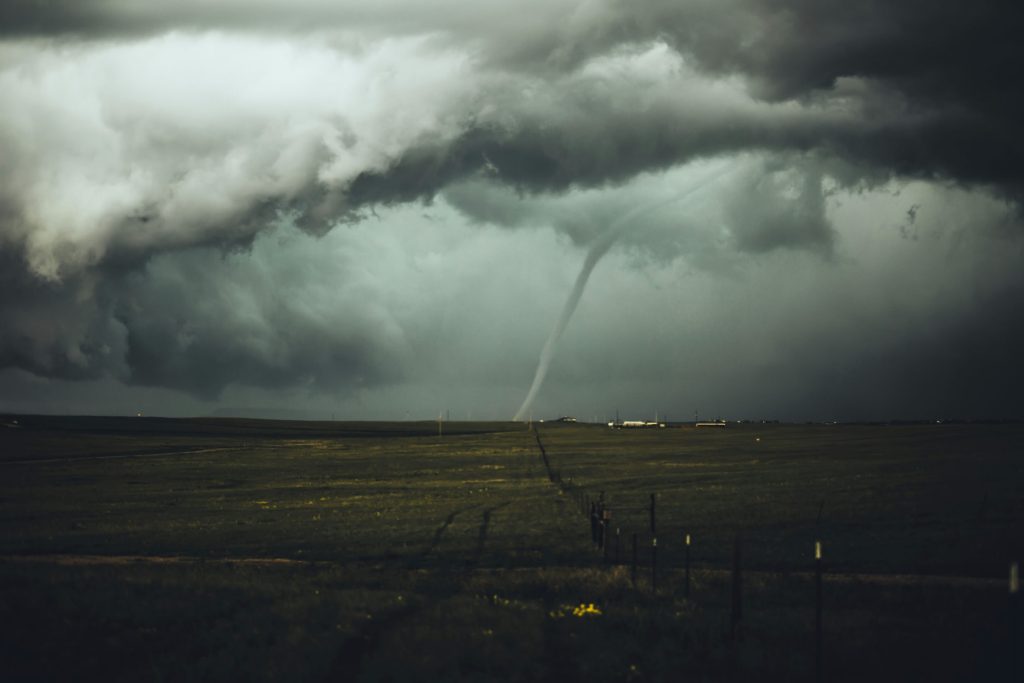In recent years, businesses across the United States have faced an increase in severe weather events and natural disasters. From powerful windstorms in the Midwest to destructive hurricanes along the Gulf Coast, these events have caused billions of dollars in property damage—and directly influenced how insurers calculate risk. For Kansas City and other regions in Tornado Alley, the connection between natural disasters and insurance rates is more important than ever.
Understanding this relationship is crucial for business owners who want to manage costs, maintain coverage, and stay prepared for the unexpected. In this article, we’ll explore how natural disasters like wind, hail, hurricanes, and earthquakes affect insurance rates, and how businesses can proactively protect themselves with the right planning, policies, and partners.
Why Natural Disasters Impact Insurance Rates
Insurance rates are driven by risk. When natural disasters increase in frequency or severity, insurers face higher claims—and adjust premiums accordingly. This is not limited to direct damage; it also includes related costs like business interruption, debris removal, and liability claims.
Insurers analyze years of data to forecast risk, and when extreme weather patterns emerge—such as record-breaking hail or hurricane seasons—they must revise pricing models to stay financially sustainable. Businesses located in high-risk areas often face higher premiums, reduced coverage availability, or stricter underwriting requirements.
According to The Insurance Information Institute (III), insured losses from natural disasters in the U.S. exceeded $90 billion in 2023 alone. That means insurers across the country are recalibrating how they assess and price risk for every policyholder.
Common Natural Disasters That Affect Business Insurance Rates
1. Wind and Tornadoes
Kansas City sits in the heart of Tornado Alley, where high winds and rotating storms cause millions in damage each year. For commercial buildings, even moderate windstorms can tear off roofs, break windows, and damage HVAC units.
- Impact on Rates: Areas prone to tornadoes and strong winds often face higher premiums for property and casualty insurance.
- Mitigation Tips: Installing reinforced roofing systems, storm shutters, and wind-resistant materials can help lower your premiums over time.
2. Hailstorms
Missouri and Kansas consistently rank among the top states for hail-related insurance claims. Hail damages everything from commercial roofs to vehicles and equipment. A single storm can result in thousands of claims, driving rates upward for entire ZIP codes.
- Impact on Rates: Repeated hail events increase deductibles for roof and exterior damage claims.
- Mitigation Tips: Schedule regular roof inspections, use impact-resistant materials, and keep detailed maintenance records to demonstrate proactive risk management.
3. Hurricanes
While Kansas City businesses are insulated from coastal hurricanes, companies with satellite offices, suppliers, or clients along the Gulf or East Coast may see indirect effects. When insurers absorb heavy hurricane losses in one region, they often increase rates nationally to offset portfolio-wide risk.
- Impact on Rates: Businesses nationwide can see moderate premium increases after major hurricane seasons.
- Mitigation Tips: If your operations depend on hurricane-prone areas, review your business interruption coverage and ensure supply chain insurance is up to date.
4. Earthquakes
Although rare in the Midwest, earthquake activity along the New Madrid Fault Line poses potential risks to Missouri and surrounding states. Earthquake insurance is typically not included in standard property policies and must be added as an endorsement.
- Impact on Rates: Earthquake endorsements can be costly in regions near fault zones or in older, unreinforced buildings.
- Mitigation Tips: Evaluate your property’s seismic retrofitting and consult with an insurance advisor to assess if earthquake coverage is necessary for your location.
Table: How Different Natural Disasters Affect Insurance Coverage and Cost
| Disaster Type | Primary Coverage Impact | Typical Premium Change | Mitigation Strategy |
|---|---|---|---|
| Wind / Tornado | Property, equipment, and business interruption | +10% to +25% in high-risk areas | Reinforced structures, wind-rated roofs |
| Hail | Property and auto damage | +15% to +40% for frequent-claim regions | Impact-resistant roofing, scheduled inspections |
| Hurricane | Property and flood coverage (if coastal exposure) | +20% nationally after major storm seasons | Emergency planning, disaster recovery coverage |
| Earthquake | Separate endorsement coverage | Variable (based on proximity to fault lines) | Structural retrofitting, seismic assessment |
How Insurers Calculate Risk After Disasters
Insurance carriers rely on historical data and predictive modeling to determine risk levels. When a natural disaster strikes, it resets their data models. Claims frequency and severity increase, and underwriters reassess risk factors such as:
- Location and building materials
- Prior claims history
- Preventative measures in place
- Regional climate trends
- Local building codes and enforcement
For example, if a region sees multiple hailstorms in a short period, insurers may increase deductibles or limit coverage for roof claims. Businesses that demonstrate proactive maintenance and safety measures are often rewarded with better rates.
Proactive Strategies to Manage and Reduce Risk
1. Conduct a Comprehensive Risk Assessment
Review all properties and assets to identify vulnerabilities. Consider both direct risks (like wind damage) and indirect risks (like supply chain disruptions).
2. Invest in Resilient Infrastructure
Buildings designed or retrofitted to withstand natural disasters not only protect employees and assets but also signal to insurers that you’re a low-risk policyholder.
3. Maintain Accurate Documentation
Keep updated records of inspections, maintenance, and safety training. In the event of a claim, this documentation strengthens your case and can speed up settlement.
4. Review Your Coverage Regularly
Work with a professional insurance advisor to ensure your policies reflect your current exposures. As your business grows, your coverage needs evolve.
5. Develop a Disaster Recovery Plan
A written recovery plan demonstrates readiness and reduces business interruption downtime. Include steps for employee safety, asset protection, and communication with clients and vendors.
Business Continuity: Preparing for the Financial Impact
When a natural disaster strikes, the real cost isn’t limited to property damage—it’s also about downtime. Business interruption coverage can bridge the gap by covering lost income and operating expenses while your business recovers.
Consider adding:
- Contingent business interruption coverage (protects against supplier or customer disruptions)
- Extra expense coverage (covers costs for temporary operations)
- Utility service interruption coverage (for power and water outages)
Review these coverages with your commercial insurance specialist. Visit Aegis Commercial Insurance to explore customized coverage options that help safeguard your operations.
How Climate Change Is Shaping the Future of Insurance Rates
Climate volatility is increasing both the frequency and intensity of natural disasters. As weather events become less predictable, insurers are adjusting premiums to reflect emerging risks. Businesses in moderate-risk zones may now see rate increases that were previously reserved for coastal or high-risk regions.
The National Oceanic and Atmospheric Administration (NOAA) reports that billion-dollar weather disasters have tripled in frequency since the 1980s. This trend has significant implications for business insurance nationwide.
Forward-thinking companies are working with advisors to strengthen resilience through improved infrastructure, proactive risk management, and data-driven planning.
Working With the Right Insurance Partner
Insurance shouldn’t just protect your business—it should empower it. Partnering with an experienced risk management provider ensures that your coverage evolves with the changing climate and regional threats.
At Aegis Insurance, our team understands the unique challenges facing Kansas City businesses. Whether you’re in manufacturing, healthcare, construction, or retail, we design strategies that combine protection, flexibility, and affordability.
Explore our specialized coverage offerings:
FAQs: Natural Disasters and Insurance Rates
How do natural disasters affect my insurance premiums?
Rates typically rise after widespread disasters due to increased claim payouts and revised risk models. The extent depends on your location and coverage type.
Can I lower my premiums by making property improvements?
Yes. Installing impact-resistant materials, maintaining your property, and updating safety systems can all reduce premiums over time.
Does standard business insurance cover earthquake damage?
No. Earthquake coverage is usually added through a policy endorsement. Speak with your insurance advisor about including it if you’re in an affected area.
Why are hail and wind claims so expensive?
Roof repairs and replacements make up a large portion of claim costs, especially when multiple businesses in the same region are affected simultaneously.
What’s the best way to prepare my business for severe weather?
Conduct a risk assessment, invest in preventive infrastructure, maintain updated insurance coverage, and establish a written emergency plan.
Conclusion
Natural disasters are unpredictable—but your response doesn’t have to be. By understanding how these events influence insurance rates and taking proactive steps, Kansas City businesses can protect their assets, employees, and financial stability.
Whether it’s reinforcing your building, reviewing your coverage, or implementing disaster recovery plans, preparation pays dividends when the unexpected occurs. For personalized risk guidance and comprehensive protection, connect with the experts at Aegis Insurance.

